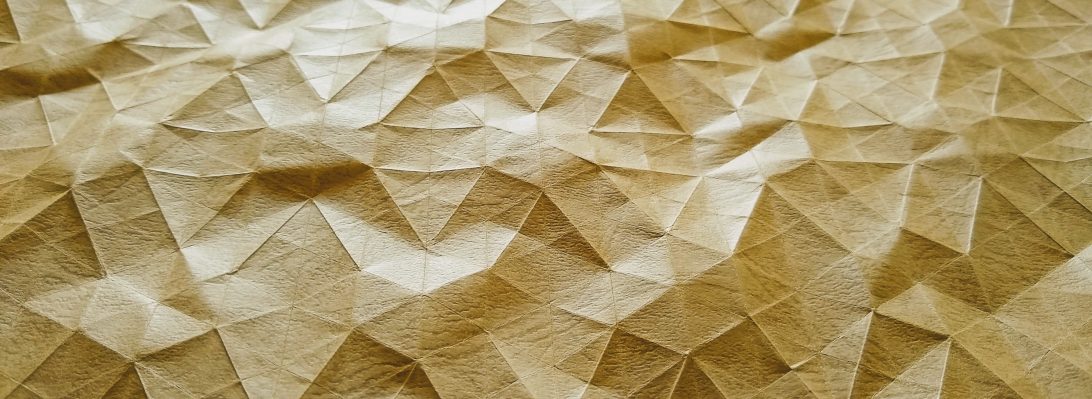I love the geometric world of Tessellations, and have folded many. It is doubly satisfying when you design that tessellation molecule and how it tiles yourself.

This is a hex-point tessellation, and is based on a mathematical algorithm discovered by Aurélien Vermont ( @auregamiiii ) and described in a paper written by them as part of their study in Engineering. The algorithm describes a geometric construction method that lest you raise a n-finned spike from a flat surface and have the surface “heal” around it.

It does so by placing strategic dart pleats that seamlessly absorb the excess paper caused by the spike in a controlled and very flexible way. You can raise a spike at the intersection of a collection of creases (2 or more intersections). The folding gets progressively more fiddly the smaller the spike and the larger the number of intersecting lines.

I chose to derive a hex-spike, that is a 6-crease intersection spike molecule, based on a regular hexagon. Once I had derived all the creases necessary to allow one spike to be raised, I test folded it (just to check – theory and practice are sometimes at odds – some paper designs for origami seem to ignore the thickness of the paper which then breaks the symmetry or distorts the shape) and all was good.
Because I based the molecule on a regular hexagon, I was then able to “tile” multiple molecules together, aligning their pleat troughs so they shared lines of fold, decided on an arbitrary spacing (it needed to be just big enough for my fat clumsy fingers to get between) and then printed a 3-molecule maquette and it collapsed cleanly so I scaled up.

I fitted as many as I could onto an A4 page (or fairly terrible but nicely coloured printer paper) and then scored my lines before creating and orienting the creases (mountain/valley). Collapsing a large field of these molecules is delicate (more so if the paper is terrible), and sort of happens “all at once” for each molecule. If the creases are pre-oriented, the collapse gathers momentum as you move from molecule to molecule – surrounding collapses help the one you are working on.
The initial collapse is curved because of the bulk of the paper in the underside widgets and gussets, but I found using my bone folder deep into the corners I could encourage it to flatten out. I used some strategic glue spots to stop the seams gaping (something I think better paper would solve) and the resultant spikey mass is visually very pleasing.

I can think of a number of applications for this tessellation – an Origami Dan member suggested I fold a cactus using them as spines (a good but very labor intensive suggestion – I have folded Lang’s cactus so know how much paper manipulation lays down that sort of track – not for now).
I may experiment more – mixing spikes based on different, irregular geometries also looks wonderful – finding a composition that I like is the tricky part as it is a non-trivial time investment.

